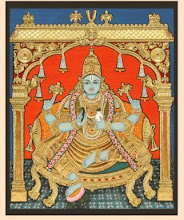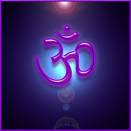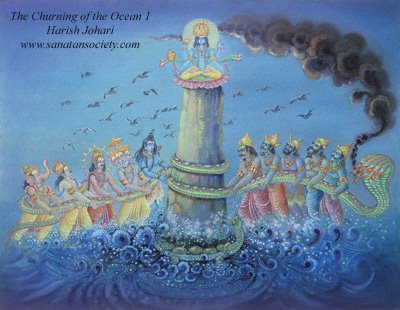What is ayurveda?
Ayurveda is the oldest system of organized living rather than just a system of medicine. “ ayusho vedaha” , the etymology of ayurveda means “ knowledge of life”. The system is enriched with wise inputs from the great and noble souls who contributed immensely for the ayurveda, and human race as a whole. Its principles and wisdom are time tested and eternal, the gift of ancestral wisdom has been passed on from generations to generations with updated knowledge and is handed over to the present generation.
Origin of ayurveda
Ayurveda is said to be an upaveda ( a subordinary ) of atharva veda. References of various diseases and treatments are mentioned in the oldest book of the world rig veda too. Jwara is menmtioned as takma,and rituals using various herbs are mentioned in the hymns of rigveda itself. Ayurveda is said to be anadhi and anantha and nithya meaning having no origin and no end and its eternal. So there is no exact starting point to ayurveda. Ayurveda deals about understanding nature’s wisdom , hence its older than human beings too. Mythologically speaking, the first acharya of ayurveda was lord brahma, the creator, among the trinity of Indian gods, its by his penance he was illuminated with knowledge of ayurveda. He preached it to lord daksha prajapathi, who passed on the wisdom to the twin physicians of the heaven the two ashwinis, who are known as deva bhisak i.e the physician for the gods , from them it was passed on to lord indra . Later when human race was suffering from various diseases which stood as obstacles to attain the ultimate aim of life, the liberation. The ancient rishis or the sages gathered around the Himalayan region and prayed the god to put an end to the sufferings. Owing to the request of rishis, lord indra taught to the rishis the divine science of life and hence ayurveda came to earth and since then it has been taught to various disciples in guru sishya parampara.
Ayurveda has eight angas in it. Each having its own importance.” Kaya bala graham urdhwanga shalya damstra jara vrushai hi”the eight angas are
1.kaya chikitsa- general medicine
2. bala chikitsa or kumara thanthram or koumara brhthyam- paediatrics
3. graha chikitsa or bhutha vidhya- dealing with paranormal phenomenons, psychiatry.
4. urdhwanga chikitsa or shalkya- dealing with diseases of head and neck.
5.shalya tantra- surgery
6. damstra or agada tantra or visa chikitsa- dealing with animal and plant poisons
7.jara or rasayana tantra- rejuvenation therapy and geriatrics
8. vrusha or vajee karana – aphrodisiac and sexual disorders.
Apart from this, there were other allied branches of ayurveda like vriksha ayurveda which deals with plants , and mriga ayurveda which deals with animals like horse, elephant, cow etc. in mahabharatha nakulan is said to be an expert of haya ayurveda.
Ayurveda has been taught in guru sishya parampara since its inception. Hence it was passed on from generations to generations, without documentation.though there were separate sampradhyas for various angas, but now only two sampradhyas exist , the atreya sampradhaya ,basically deals with kaya chikitsa or general medicine based on charaka and vaghbhatta’s works and dhanwanthari sampradhya who basically deal with surgery based on sushrutha samhitha. Even now in some parts of kerala there are vaidya traditions who are following other branches like visha chikitsa, bala chikitsa, graham chikitsa and akshi chikitsa. Brhat thrayees and lagu thrayees are the important works on ayurveda, brhat thrayee includes charaka samhitha , sushrutha samhitha and ashtanga sangraha(hrdaya). Laghu thrayees include sarangadhara samhitha, bhava praksha, and madhava nidana. There are other important books like bhaisajya rathnavali, yoga rathnakara, basavarajeeyam , sahasra yogam, etc. bhela samhitha, haritha samhitha and kashyapa samhitha are available incompletely. Sushrutha and charaka can be considered as the pioneers of surgery and medicine respectively in the Indian system of medicine. After the invasion of Buddhist ideas were surgery was considered as a type of himsa or torture lead to the advancement of the dormant field of rasa shashthram. Plenty of works were done exclusively on rasa shastram in the time span of 2-14 AD. Nagarjuna acharya is an important contributer for enhancing rasa shastra. Rasarathna samuchaya, rasa tharangini, rasendra sara samgraha or some important works in rasa shastram. Nigantus are the works which deal with various usages , proceesing , preservation , cultivation , and classification of medicinal plants. They contain extensive description including the morphological and pharmaceutical features of plant. Important works includes dhanwanthari nigandu, raja nigantu , shodala nigantu and kaiyadeva nigantu.
Philosophy of ayurveda:
Ayurveda believes in god and considers ultimate aim of life as getting liberation. The principles of ayurveda are deep rooted with various Indian philosophical systems like sankhya, nyaya, yoga, vaiseshika and meemasa darshanas.
Ayurveda strongly believes on pancha mahabhutha theory. Every thing in this materialistic universe is composed of five elements of nature
1.prthvi- compared to earth component
2.ap- compared to water or the liquid component
3.agni- compared to fire component
4.vayu- compared to wind element
5.akasha- compared to space component..
The evolution of universe has been understood by the ancient seers. The chaturvimsathi tatwas or the 24 components show the evolution of universe. Purusha is considered to be the spectator of everything and resides in the body, which is formed of pancha mahabhutas. Chetana or the athma resides inside the body and remains as a spectator of life and remains inside the body as long as the shareeram holds it. Prakrthi and purusha relationship could be understood with this pangu- andha nyaya. Purusha is compared to pangu i.e a lame person who knows were to go and what to do but is unable to carry out the activity since he is lame , he requires a vehicle to do his functions, to carry out his missions, that vehicle which carries the purusha is prakruthi which is compared to blind person who has the ability to move but doesn’t know were to go. Hence purusha and parakrthi together like a blind man carrying lame man in his shoulders only could reach the destination of life.
Satva , rajas , and tamas are called as the trigunas or the maha gunas or ahamkara. Everything in this world is composed of the trigunas. Satva is a state of potential untapped energy state representing balance and spiritual steadiness. Rajas is the state of hyperactivity , a state of kinetic energy , a unsteady and restless behaviour. Tamas a state of exhaustion and dark manifestations. Satva is considered to be uthama and indicates a balanced and poignant state of mind and highly spiritual attitude. Rajas and tamas are considered to be mano doshas , whose imbalance causes disturbance in the mind. The food items also have various combination of the trigunas in them. Hence rajasika and tamasika food have to be avoided to avoid stress, and keep mental health intact. Food items which are hot and spicy like chilly etc are high in rajasika content, nonvegetarian foods, icecreams and junk food items are tamasika in nature . hence these should be avoided.
The concept of three doshas are very important and forms the basis of the ayurvedic treatment. The three doshas are very similair to the humor concept that was put forth by Hippocrates . it could be said that the sushrutha’s four doshas concept was the humor concept of Hippocrates.
Three doshas are
Vatha- component which is possessing the qualities of dryness, movement, lightness, coldness etc and carries out functions like respiration, conduction, locomotion, transportation of various other components of the body.
Pitha – component which is possessing the qualities of hotness, penetrating and sara etc, forms the agneya part of body , carries out functions like digestion, metabolism, vision, and other such functions.
Kapha- component which protects and covers the body , characterized by stability , coldness, heaviness etc and carries out functions like protection, giving nourishment and providing strength etc.
“Vayuhu pitham kaphamscheti trayo doshaha samasathaha…
Thae vikrutha avikrutha deham gnanthi thae varthayanthi cha”
These three doshas are also known by the name tri dhatus – as they support the growth of the body. They are also known as tri sthunas- three pillars of life. The balance between these three doshas is the state of health and any imbalance creates disturbances and causes diseases. These three doshas are not anatomical entities, which can be visualized but physiological components which are having particular characteristic features (gunas) and functions (karmas). These three doshas are nothing but the divinity manifested in the human being, vatha is brahma tatvam pitha is lord maheshwara and sleshma is lord janardhana. Lord shiva is pitha amsham hence he is having soma (moon ) in his head , lord Vishnu is kapha amsam hence he is sleeping in ksheera sagaram (milky ocean). These three doshas are prevalent in various periods of time,
“ vayo aho rathri bhukthanam thae antha Madhya adhigaha kramath”
,eans vatha is predominant in the anthima avastha or the end stage of age,(old age) last part of day and night, last part of digestion. Similairly pitha in middle part and kapha in earlier stages respectively. In body the upper part from head to chest especially chest is the main sthana of kapha, the region between chest and umbilicus forms the main sthana for pitha and below umbilical region is the main sthana for vatha doshas respectively.similairly during various seasons also one or the other dosha dominates and the diseases of that particular doshas dominate during those periods. The trigunas satwa , rajas and tamas and the three doshas of the shareera are closely interrelated. When rajas is getting disturbed it disturbs vatha and pitha and vice versa. Similairly when kapha is disturbed it disturbs tamas and vice versa. Pure kapha form is satvika in nature.
There are seven dhatus in human body namely.
Rasa- the liquid component which is formed as essence of digestion and nourishes
Raktha- shonitha or blood which is essential for living and nourishing
Mamsa- the muscular component which forms the mass and protects the internal organs
Meda- the component of fat, which acts as buffer , and acts as lubricant
Asthi – the skeletal system which gives the basic framework for our body
Majja – that which is filled inside the cavities of bone, compared to marrow
Sukra- the reproductive counterpart which helps in procuring offspring.
Ojus is said to be the sara or the essence of all these seven functional components. It provides strength, stamina and valour to the person. Of these seven dhatus,
Rasa, meda, mamsa, majja, sukra- are kaphamsa
Raktha- pitham
Asthi- vatha. The relationship between the dhatus and doshas is known as ashraya ashrayee sambandha.
Saturday, April 18, 2009
Subscribe to:
Posts (Atom)


